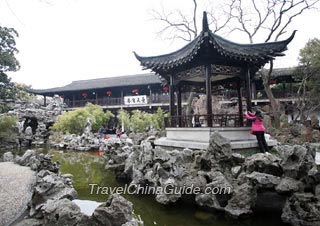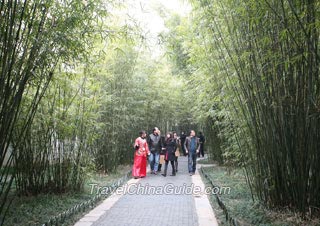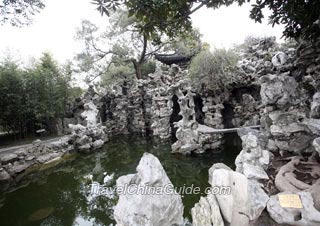Ge Garden
 |
| Summer Time in Ge Garden |
It was during the Han Dynasty (206BC-220AD) that garden construction on a large scale emerged in Yangzhou City. The garden construction in Yangzhou City later became prosperous early in the Qing Dynasty (1644-1911), especially after the southern itineration of the famous Qing Dynasty emperor Qianlong. It was also during this period that Yangzhou got famous for its beautiful gardens. Unfortunately, over the years most of the gardens were damaged in the confusion and disorder brought about by various wars. But Ge Garden survived along with several others in Yangzhou City.
Huang Zhiyun, a rich salt merchant and the owner of the garden, thought highly of the upright character of the bamboo. At the same time, bamboo leaves look like the Chinese character 'ge (个)', so the name of 'Ge Garden' was given. Originally, there were more than one hundred kinds of bamboo in it, but today only a sprinkling of bamboo can be seen. The garden now is best known for its rockeries, which take on different aspects as the seasons change.
Ge Garden uses bamboo and rocks as its principal elements and is characterized by stone-piling. Different rockeries are formed from different kinds of rocks to represent different scenes in the four seasons, hence the name 'four-season-rockery'. There are no other similar gardens anywhere in China. Compared to other plants, the garden gives priority to the bamboo. Using the grotesque shapes of the rocks, a distinctive scene consisting of bamboo and rocks is formed. It actually is a mixture of the grandness of the North and the delicacy of the South.
|
|
| Admission Fee: | CNY 30 (Mar. - May and Sep. - Nov.) CNY 45 (June - Aug. and Dec. - Feb.) |
| Bus Route: | Take Tourism Bus (from West Bus Station to Yingbinguan) and get off at Geyuan Station |
- Last updated on Apr. 08, 2021 -

